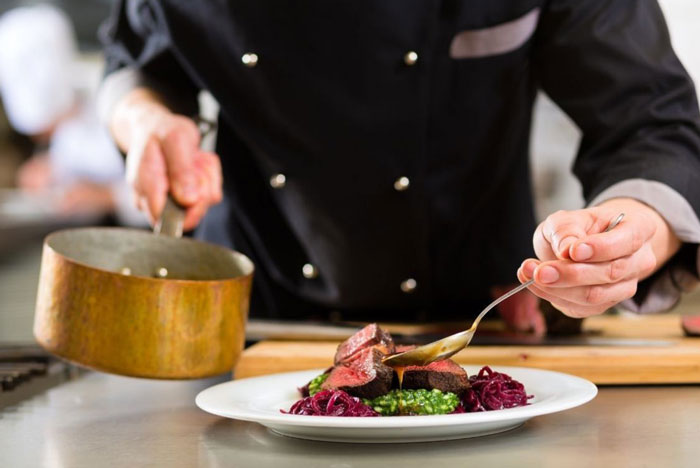“If I had asked people what they wanted, they would have said faster horses.”
– Henry FordWhy we need to change our mindset as we update our tech
Covid is behind us – the future is a little more certain than it was in 2020, but it’s still hard to know what life will really look like in 10 or 20 years. The extent and speed of the shift from early iPhones to Artificial Intelligence in under 2 decades has been pretty astonishing, when you think about it.
We don’t really know exactly what’s coming in another decade. But one thing is certain: it will include a lot of tech. And a lot of that tech will be powered by AI.
The jury is also still out on whether Henry Ford even actually said those exact words. But the sentiment was certainly in line with his innovative thinking, which drove the shift to widely available motor transport.
The problem with our Aussie hospo industry, in my humble opinion? We’ve been looking at tech as a way to optimise the way we do the same things. E.g. Instead of calculating spend per head manually, we’ll do it with tech. Instead of conducting a stocktake manually, we’ll do it with tech. This makes sense. But that’s only “phase one” of a two phase shift to the future.
The surge of technology that’s disrupting the hospitality industry presents another opportunity. We can seize that opportunity now, or wait 10 years for it to seize us.
- Step one is using tech to improve our current processes. Aka the “get faster horses” mindset.
- Step two? Change not only the way we do things, but the things we do. Update our way of operating and looking at business in our industry. Why continue to do certain things just because that’s the way we’ve always done them? Aka Ford’s “constant innovation” mindset.
As well as optimising some old ways of doing business (if it ain’t broke don’t fix it), can we collectively seize the opportunity to change the way we see business in the first place? Can we take the good bits and leave the bits that don’t work any more today, harnessing the best of modern technology to bring it all together?
Things looked different in the past, and they’ll look different in the future.
To understand why I’m suggesting this, it’s important to remember that the business and social climate now (and in the future), looks very different than when I went into business 30 years ago. Or even how things were 10 years ago. But most of the industry is still doing things largely the same way (just doing it more efficiently by leveraging technology).
Here’s a comparison exercise. It’s simplified, because of course there are hundreds of other factors to consider in a business, but it fairly clearly highlights the issue.
In 2003 (20 years ago) this is how we were doing business in Specialty Coffee:
- Small latte sale price $3-3.20
- Minimum wage $10.80 /h + WorkCover, super & leave/ casual loading – around $15/hr all told
- Specialty coffee $18-23 / kilo, good quality milk $1.00 per litre
Industry profit margin average was around 15%.
Only 10 or 11 years ago, it was more like this:
- Small latte sale price $3.50.
- Minimum wage $15.96 per hour + WC, super, leave/ casual loading – about $22/hr
- Specialty coffee $20-25 per kilo, quality milk $1.25 per litre
Industry profit margin average was falling.
Now in 2023:
- Small latte sale price $4.70
- Minimum wage is $21.38 + WC, super, leave/ casual loading, costing around $30/hr (and we know you’d be lucky to find a decent team willing to work on minimum wage anyway…)
- Specialty coffee is bought in at $28-33 per kilo, quality milk at $1.75 per litre.
Average industry profit margin is clinging on at 3-6%. More than half of businesses go bust in the first few years.
So just looking at the basic costs of making and serving a coffee (without factoring in the other costs around running business, like rent and utilities, which have all also risen significantly), we’ve essentially got a customer paying only 1.5 times as much for the product, while labour cost has doubled.
It can be clearly seen in the industry’s average bottom line and the scary number of businesses that simply can’t make it work.

So what can we do about it?
The fact is, we’re not going back to the heyday of (comparably) easy profit. It’s not going to happen. Meaning the operators in the industry who can’t keep up with the times are simply going to be left behind. And if we keep traveling along the way we’ve always done, even if we’re making new efficiencies in our old operations, things are going to keep getting harder.
Meanwhile, customers using dynamic benchmarking and are making an average 15% today. And some are making up to 25%. More importantly, they’re safeguarding their capital investment by keeping their business valuation high.
- They’re doing this by rethinking what numbers are important to focus on, and leveraging the latest AI and technology to stay completely dynamic and agile, because every percentage point counts in the current business climate.
- They’re not looking so much at what happened in the past, because they can’t change that now. They’re letting digital analytics inspect the past and predict the future for them, and they’re focusing on the upcoming costs that they can actually change, to make small improvements and grow their business and their profit margin.
- They’re staffing to revenue demand using better AI forecasting and harnessing tools specifically designed to boost productivity. They’re using smarter rostering to make target-beating, productive rosters without having to hound the team every 3 minutes to clean something, building happier teams.
- They’re realising that they don’t even really need to do a monthly stocktake, because they can use a dynamic ordering budget to remain precisely within GP benchmark. If they’re happy with that GP margin and the quality of the products leaving the kitchen, no need to sweat the small stuff.
- They’re seeing a stable, healthy profit margin as a matter of costs following revenue. If the costs are in line, there’s simply no need to stress.
I’ve done this a long time, and become successful partially because I always try to look at things differently, and outside of the “business as usual” box. But I don’t know anything secret about the industry that others don’t. I operate with the same costs, the same models and within the same financial climate that apply to us all.
Viability is just a new way of looking at things to get great profit results. I created Viability because I wanted to have a completely holistic picture of business in real time, so I could keep my costs in line with dynamic revenue and boost profit consistently and controllably. We used to use spreadsheets to do the same process. Now we’re powered by AI. It’s the way of the future. I’m passionate about it because I have seen so many businesses succeed using this model, and far too many fail by getting caught in the wrong details and not understanding their holistic position in real time.
Viability is just the tool that enables a new way of viewing business and making profit. The option is already in our hands. You can try it for free.
